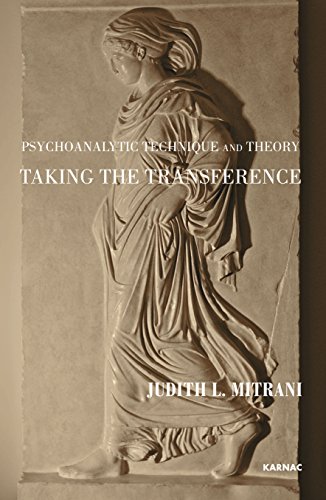Not Just a Luxury
Last week I met with a colleague for supper. She arrived in a huff, steaming about something or other. Not a difficult patient, not a fight with her husband. "Then what?" I asked. "You'll never guess," she cried. "You have to see it to believe it."
She'd seen "it" on the way to the restaurant from her office. "What will our patients say? What do we say? Isn't it enough to turn the pages of the most dignified magazines -- the very ones we place out in our waiting rooms -- only to find that we're frequently the subject matter of cartoons? Now we have to deal with Madison Avenue, a new even more in-your-face assault on our profession."
"So, what?" I asked.
"A billboard! " said she, breathlessly.
Looming high above Olympic Boulevard -- smack dab in the middle of the West side of Los Angeles -- home of 'Couch Canyon' -- a beautiful blond in a convertible underscored the slogan: Fire Your Analyst! Call Your Mercedes Dealer!
The waiter comes. We order drinks.
Doubles!
I see my colleague's point. The billboard says it all: analysis is just a luxury. Trade in the couch for something more glamorous, something with enduring prestige and power, something that will make you feel good. No one ever poked fun at a 450 SL. But is that all analysis is? A luxury?
I thought back to a time, some years ago, when a young man came to see me for analysis. He was in such a dark, impenetrable state of distress when first we met that I feared he might not survive the week. From that moment on, our connection was intense yet fragile, filled with moments of cruel rage, loving tenderness and -- as he once said -- "everything in between."
Our first major interruption in the treatment took place over the weeklong Christmas holiday. Before we parted, he presented me with a gift: a 'book' that he'd made himself. Printed by hand on the front cover was the title: Photo Album of My Imaginary.
Between the covers, carefully drawn in pen and ink, were a series of simple rectangles -- one to a page -- with captions printed by hand below each one. Some were dated with a year, some with the month and year, others with a precise date; still others were left untethered in time. One said: "Shepard Pratt-four point restraints". Another, just "Hanging 1978". A 'preface' offered a poignant explanation of thirty-one such 'photographs' -- perhaps not coincidentally, one for each year of his painful existence.
This patient was immersed in photography. What intrigued him were the limits of the "frame with four sides." He wondered what there was "beyond the frame," what the photographer chose not to let his audience see. In his book there were no actual pictures within the frames. In the preface he wrote that the caption and the frame were meant to "bring back not one but a multitude of images and feelings, impossible to capture in one picture alone. The frames and the captions serve as starting blocks for our imaginations to spring from."
This gift was presented to me at the end of the final hour before the holiday break. I was very moved by this gesture, and throughout our separation I had many thoughts about my patient and his 'book'. It seemed to be a metaphor for our work together: analysis as the living frame for his unimagined experiences.
As I gave it some thought it seemed to me that, in analysis, the four hours per week -- like the four lines of the rectangle -- provide the boundaries of the 'imaginary,' creating the frame for the analytic week and all that it contains. Associations -- like the captions below the frames -- serve to bring back not one but a multitude of images and feelings. Together within the safety of the frame, analyst and analysand strive to capture the previously unimagined-imagined; developing imaginative word-photographs within the limits of a common language, within the borders of each forty-five minute hour, within the frontiers of the analytic week, within the confines of the analytic relationship, and within the creative overlapping of two minds. In the end, both doctor and patient are left to wonder what lies outside the frame, outside the bounds of what each has chosen -- consciously or unconsciously -- to let the other 'see.'
Each of my patients communicates their raw experiences by enacting them in the therapeutic relationship, like pieces of film requiring processing by a mind. In analysis, this 'processing' calls upon the analyst to receive and respond to those very vivid impressions of the patient's inchoate and sometimes even unmentalized experiences, allowing them to resonate with his own, producing something analogous to a photographic negative. The subsequent 'developing process' is one in which the analyst feels, suffers, mentally transforms, and finally, verbally constructs -- for and with the analysand -- various possible meanings for those more immediate versions of life's earliest experiences as they are glimpsed through the therapeutic lens.
Indeed, it is difficult to communicate these intimate experiences to others. Such personal inner portraits cannot be pasted on billboards or captured in catchy mottoes or pithy sound bites. And even when we do try to share our experiences -- with colleagues in scientific meetings and professional journals -- all we can hope to do is to reproduce a clinical discursive snapshot -- and its theoretical transformation -- developed in the imagination of the psychoanalyst and described in terms of available lingo. What is put in print in mostly obscure volumes is merely a sampling of the various representations of our experiences. There is much more still to be 'seen'; more which lies outside the frame of those books or articles we write, volumes that go largely unread. Left out-of-bounds is that which the analyst has chosen -- in the interest of confidentiality -- not to let the reader 'see,' that which each member of the analytic couple has 'chosen' not to let the other 'see,' and of course, the ineffable. Any theory or illustration of theory, like any photographic print, is only a representation of our perception of reality. It is merely a feeble attempt at creating an approximation of human experience.
As my patient once reminded me, "There is so much more that overflows the boundaries of the frame in all directions."
Indeed, analysis is much more than a luxury.
She'd seen "it" on the way to the restaurant from her office. "What will our patients say? What do we say? Isn't it enough to turn the pages of the most dignified magazines -- the very ones we place out in our waiting rooms -- only to find that we're frequently the subject matter of cartoons? Now we have to deal with Madison Avenue, a new even more in-your-face assault on our profession."
"So, what?" I asked.
"A billboard! " said she, breathlessly.
Looming high above Olympic Boulevard -- smack dab in the middle of the West side of Los Angeles -- home of 'Couch Canyon' -- a beautiful blond in a convertible underscored the slogan: Fire Your Analyst! Call Your Mercedes Dealer!
The waiter comes. We order drinks.
Doubles!
I see my colleague's point. The billboard says it all: analysis is just a luxury. Trade in the couch for something more glamorous, something with enduring prestige and power, something that will make you feel good. No one ever poked fun at a 450 SL. But is that all analysis is? A luxury?
I thought back to a time, some years ago, when a young man came to see me for analysis. He was in such a dark, impenetrable state of distress when first we met that I feared he might not survive the week. From that moment on, our connection was intense yet fragile, filled with moments of cruel rage, loving tenderness and -- as he once said -- "everything in between."
Our first major interruption in the treatment took place over the weeklong Christmas holiday. Before we parted, he presented me with a gift: a 'book' that he'd made himself. Printed by hand on the front cover was the title: Photo Album of My Imaginary.
Between the covers, carefully drawn in pen and ink, were a series of simple rectangles -- one to a page -- with captions printed by hand below each one. Some were dated with a year, some with the month and year, others with a precise date; still others were left untethered in time. One said: "Shepard Pratt-four point restraints". Another, just "Hanging 1978". A 'preface' offered a poignant explanation of thirty-one such 'photographs' -- perhaps not coincidentally, one for each year of his painful existence.
This patient was immersed in photography. What intrigued him were the limits of the "frame with four sides." He wondered what there was "beyond the frame," what the photographer chose not to let his audience see. In his book there were no actual pictures within the frames. In the preface he wrote that the caption and the frame were meant to "bring back not one but a multitude of images and feelings, impossible to capture in one picture alone. The frames and the captions serve as starting blocks for our imaginations to spring from."
This gift was presented to me at the end of the final hour before the holiday break. I was very moved by this gesture, and throughout our separation I had many thoughts about my patient and his 'book'. It seemed to be a metaphor for our work together: analysis as the living frame for his unimagined experiences.
As I gave it some thought it seemed to me that, in analysis, the four hours per week -- like the four lines of the rectangle -- provide the boundaries of the 'imaginary,' creating the frame for the analytic week and all that it contains. Associations -- like the captions below the frames -- serve to bring back not one but a multitude of images and feelings. Together within the safety of the frame, analyst and analysand strive to capture the previously unimagined-imagined; developing imaginative word-photographs within the limits of a common language, within the borders of each forty-five minute hour, within the frontiers of the analytic week, within the confines of the analytic relationship, and within the creative overlapping of two minds. In the end, both doctor and patient are left to wonder what lies outside the frame, outside the bounds of what each has chosen -- consciously or unconsciously -- to let the other 'see.'
Each of my patients communicates their raw experiences by enacting them in the therapeutic relationship, like pieces of film requiring processing by a mind. In analysis, this 'processing' calls upon the analyst to receive and respond to those very vivid impressions of the patient's inchoate and sometimes even unmentalized experiences, allowing them to resonate with his own, producing something analogous to a photographic negative. The subsequent 'developing process' is one in which the analyst feels, suffers, mentally transforms, and finally, verbally constructs -- for and with the analysand -- various possible meanings for those more immediate versions of life's earliest experiences as they are glimpsed through the therapeutic lens.
Indeed, it is difficult to communicate these intimate experiences to others. Such personal inner portraits cannot be pasted on billboards or captured in catchy mottoes or pithy sound bites. And even when we do try to share our experiences -- with colleagues in scientific meetings and professional journals -- all we can hope to do is to reproduce a clinical discursive snapshot -- and its theoretical transformation -- developed in the imagination of the psychoanalyst and described in terms of available lingo. What is put in print in mostly obscure volumes is merely a sampling of the various representations of our experiences. There is much more still to be 'seen'; more which lies outside the frame of those books or articles we write, volumes that go largely unread. Left out-of-bounds is that which the analyst has chosen -- in the interest of confidentiality -- not to let the reader 'see,' that which each member of the analytic couple has 'chosen' not to let the other 'see,' and of course, the ineffable. Any theory or illustration of theory, like any photographic print, is only a representation of our perception of reality. It is merely a feeble attempt at creating an approximation of human experience.
As my patient once reminded me, "There is so much more that overflows the boundaries of the frame in all directions."
Indeed, analysis is much more than a luxury.






